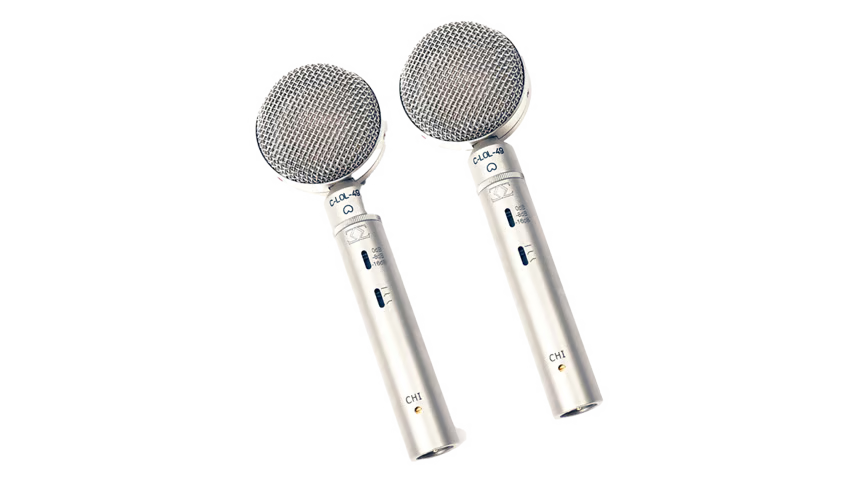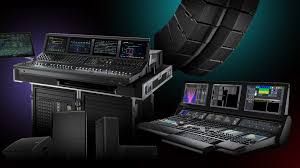By: Dawn Kenseth, Head Electrician

When we shut down in March, I was in Columbus, OH. In fact, I was up in a Genie ziptie-ing some new cables into a lighting truss when the governor announced the immediate ban on large group gatherings. Two days later, we knew we were heading home. I decided to rent a car and bring most of my belongings back with me – I happened tobe a little disorganized at the time and needed a chance to slim down the clutter. These 4 weeks would be a perfect opportunity.
Well, 4 weeks turned into longer… a LOT longer. With that in mind, since I can’t exactly share a “tour diary” of what I did last week, and because I happened to be sorting through all my gear anyways, I thought I’d share with you a bit of my packing list. What do I bring with me on tour and why? I’d like to think it can offer a unique glimpse into this particular lifestyle and career.
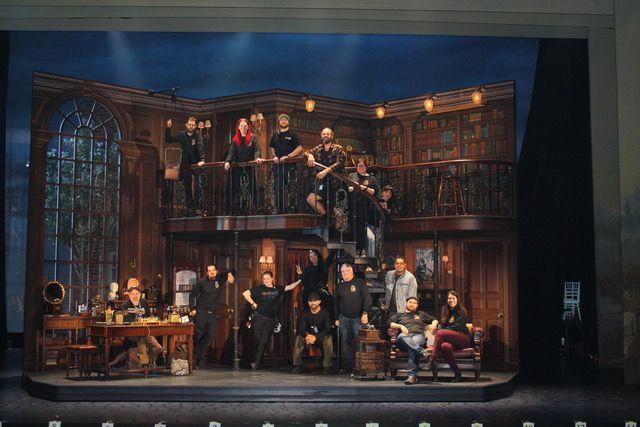
As for my particular background, I’ve been touring with Broadway musical productions for well over 10 years now. I started at the bottom with bus’n’truck one-nighters; those 3 or 4 semi-trailer productions where the crew lived on a sleeper bus and we’d play 6 cities in a week. During those tours, most of what I traveled with was about making bus-life easy: slippers you could wear into a truck stop, an extra blanket (busses are kept cold on purpose), and an easy one-nighter bag that could carry my shower gear and change of clothing to whatever dressing room I happened to be showering in that day.
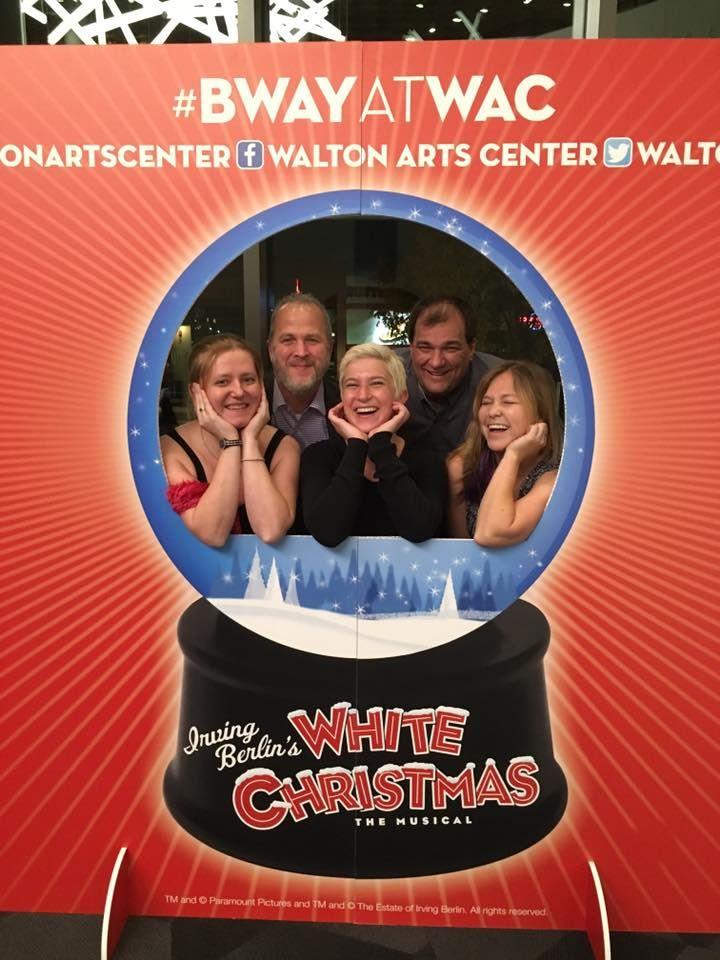
After building a resume of those smaller tours, I’ve moved up into newer shows and physically larger productions. My “current” tour, My Fair Lady, is a new production, travels in 8 semi-trailers, and is on an itinerary of week-sits, with some stops being 2 or 3 weeks. With this schedule, we stay in hotels every night and travel from city to city either by bus or plane depending on the distance and timing. It’s a different style of touring from sleeper-bus living, and therefore my packing list has adapted accordingly. Every time I pack up for a tour I ask myself – “Is it useful”, “does it ‘spark joy’”, and of course “how much weight does it take up in my suitcase?”
I’ve broken the following down into three sections – containers, work-related, and life-related. Sure, the work-related gear is head-electrician-centric, but I’m sure it’s all useful to hear. Enjoy.
PART ONE: CONTAINERS:
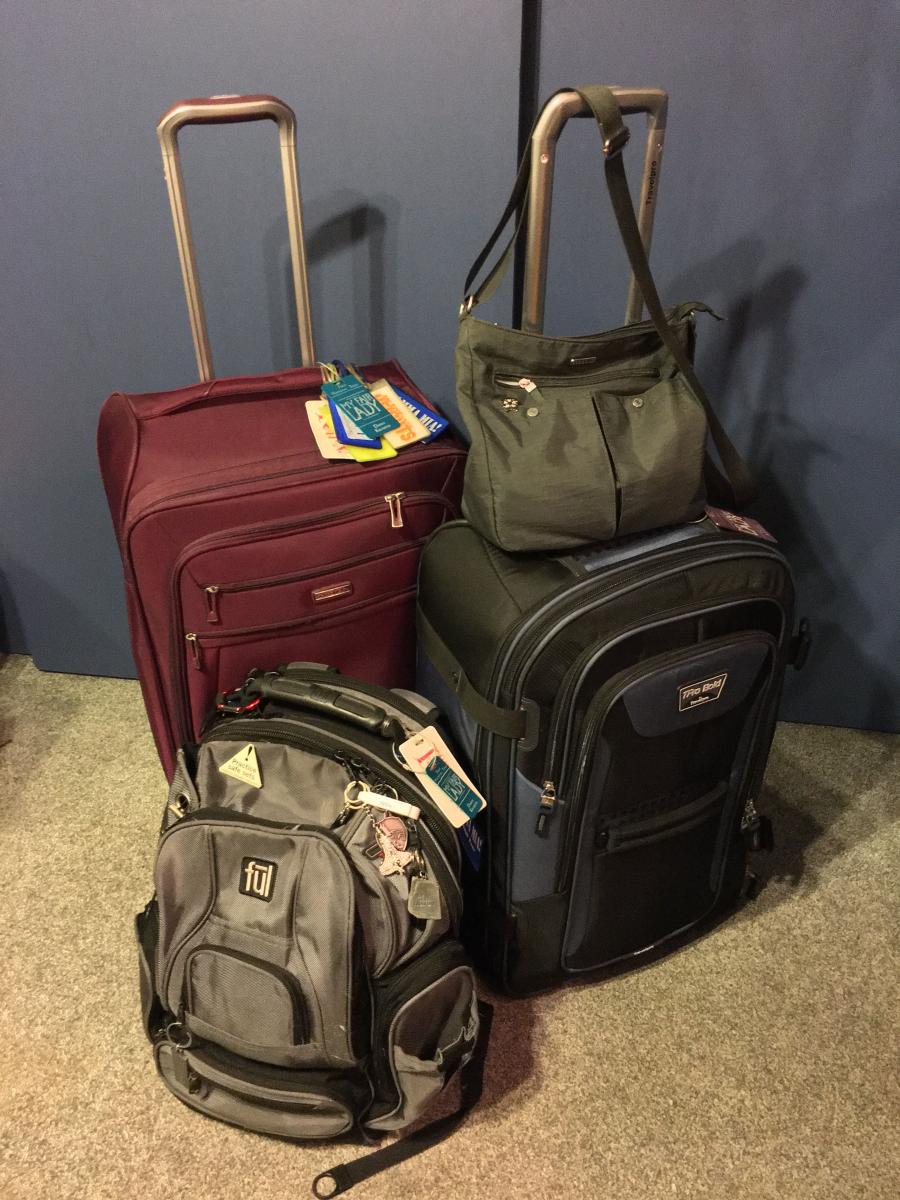
1. Checked Luggage: The contract usually talks about 2 suitcases, which is simple enough. However, choosing them is like shopping for a car or apartment: I spend a lot of time looking at the various pockets, zippers and wheels until I find one with good quality in a layout that I like - after all, it will be my home base for 5 years or more.
Currently, I have a 4-wheel “spinner” Samsonite and a 2-wheel TravelPro. I’ve discovered having at least one 2-wheeler makes it easier to navigate on bumpier sidewalks, thick carpeting and elevator thresholds. My biggest piece of advice: avoid the cheap luggage built to only survive 1 family vacation.
2. Carry-Ons:
- Laptop Backpack: This is my office space. It can fit my laptop, mobile printer, travel-sized scanner, and every USB cable you can think of. I also travel an extra power strip for poorly designed hotel rooms and a 15’ long HDMI Cable to connect my laptop to the hotel TV.
- Small Duffle Bag: My duffle carries my DSLR camera, my purse, and whatever odds and ends I want to fly with in a given week. I chose it because it can fit into the tiny overhead compartments of little regional jets – a.k.a. I don’t have to awkwardly stand in the jet-bridge waiting for a gate-checked piece of luggage.
- Baggalini Purse: It’s a lightweight, crossbody purse that’s a bit smaller than a messenger bag. My laptop can slide into this for easy days at work when I don’t want to lug my backpack to and from the theatre. Beyond that, it’s a classic purse with the right-for-me combination of zipper pockets & pouches.
3. Personal Trunk: Tours with AEA casts contractually provide trunks for the cast, which travel in the tour’s semi-trailers. Think of those 50-gallon heavy duty plastic tool-storage type bins they sell at hardware stores. Sometimes this courtesy gets extended officially to the entire touring company or other times the crew simply take it upon ourselves to get our own trunks and store our excess gear in whatever unofficial way we want. After all, we’re the ones who have to load it on and off the truck, right? For my current tour, I have a personal trunk that rides on top of a road case of spare moving lights, while my assistants’ trunks ride on top of “Spare DMX” and “Spare L6-20/Powercon.”
Contents wise, my trunk usually contains my carry-on duffle bag (when I’m not flying with it), my kitchen bag (more on that in a minute), my fancy clothing (opening night party dress/shoes), and whatever offseason apparel I have with me (winter coat/boots or summer shorts/swimwear).
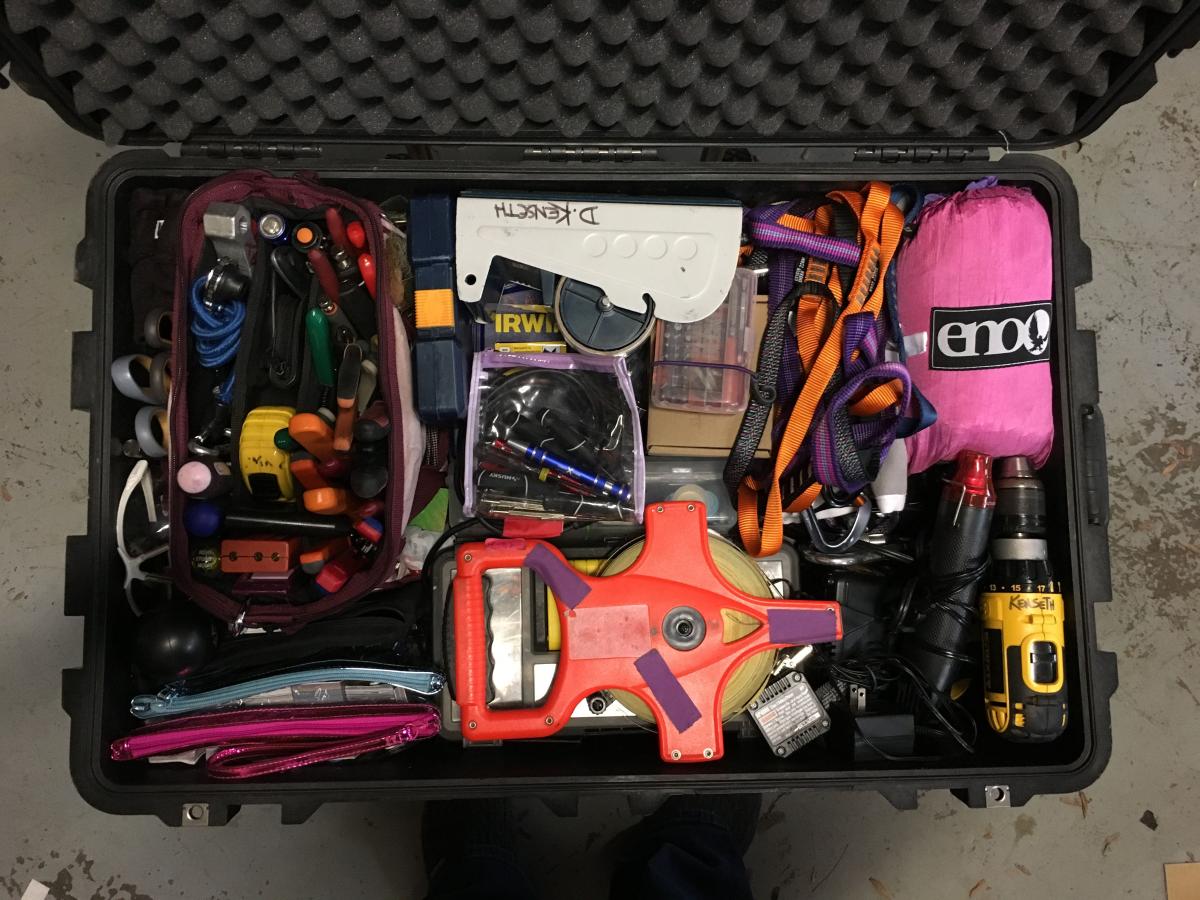
4. Tool Case/Pelican: Many head electricians on the road eventually invest in their own rolling workbox – which can house a combination of tools, supplies, leisure, kitchen, and clutter. I have (so-far) avoided that investment and tour with a Pelican 1650 for my tools. As we start a tour, the frequently used stuff gets moved over into a drawer of the show’s LX Workbox that our department lives and works out of, while my lesser used tools can stay packed away for special needs.
PART TWO: ON THE JOB/WHAT’S IN MY TOOL KIT?:
Each production will buy some tools for the shows like truss mallets and trim tapes, but as a touring head electrician, you may want to purchase some specialty items for yourself. It allows you to control the quality & brands of gear you have.
My key items include:
1. Warehouse-Style Tool Pouch: I wear this for every load in/load out and sometimes for a particularly busy pre-show. It can quickly snap on and off my belt, which is awesome when we hit lunch break. As for contents: it includes my rechargeable StreamLight flashlight, 11-in-1 screwdriver, Gerber, precision multi-screwdriver, pen, sharpie, white paint pen and a couple rolls of electrical tape. There’s also a pocket to store my truck-pack paperwork.
2. Swisson DMX Tester & DMXCat: I’ve had my Swisson for maybe 12 years now. It’s not cheap, but it’s absolutely been a life-saver. I can quickly troubleshoot bad (or lack of) DMX, test data cables, and send DMX in a simple control format. Meanwhile the newer DMXCat can do profile-based ML Bench testing, which is helpful for fixtures with complicated DMX profiles. It also can do nifty RDM tricks, such as turning off the bright blue LED indicators on the Lustrs when you can’t reach them.
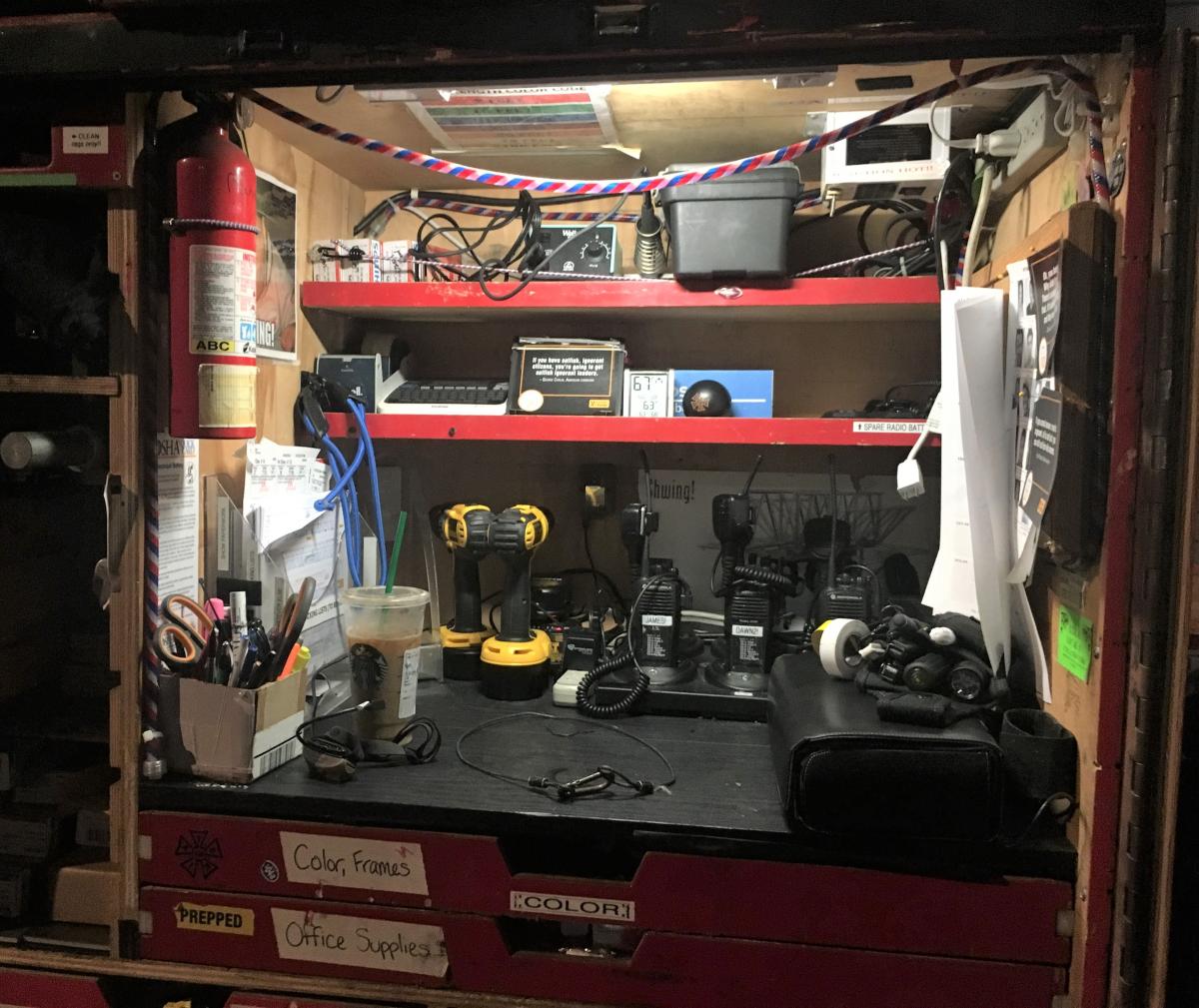
3. Soldering Iron: I don’t solder a lot on tour, but it’s important to have the supplies and skill when something does break. I occasionally get the child-level learn-to-solder projects for some fun practice.
4. Black Fleece FOH Blanket: Why do so many light booths have overactive HVACs?! Yeesh! Then there are those older theatres where my console setup is right next to the exterior doors during the polar vortex. Long story short, the blanket has helped keep me from shivering over the Go button.
5. A few other ‘honorable mentions’ go to:
- Fluke or other quality true-RMS Multimeter/Ampmeter: No self-respecting electrician should be without one. Meter your power, test your equipment!
- Wide-mouth (such as true Crescent branded) C-wrench: It opens wide enough for CO2 tank regulators used with hazers and will do other things your fancy speed wrench can’t do.
- Radio w/ Flair: Every roadcrew member is provided with a two-way radio, and we often decorate or label them in unique ways. My “Fun Meter” piece of radio flair was given to me by an LD many years ago.
6. SAFETY GEAR:
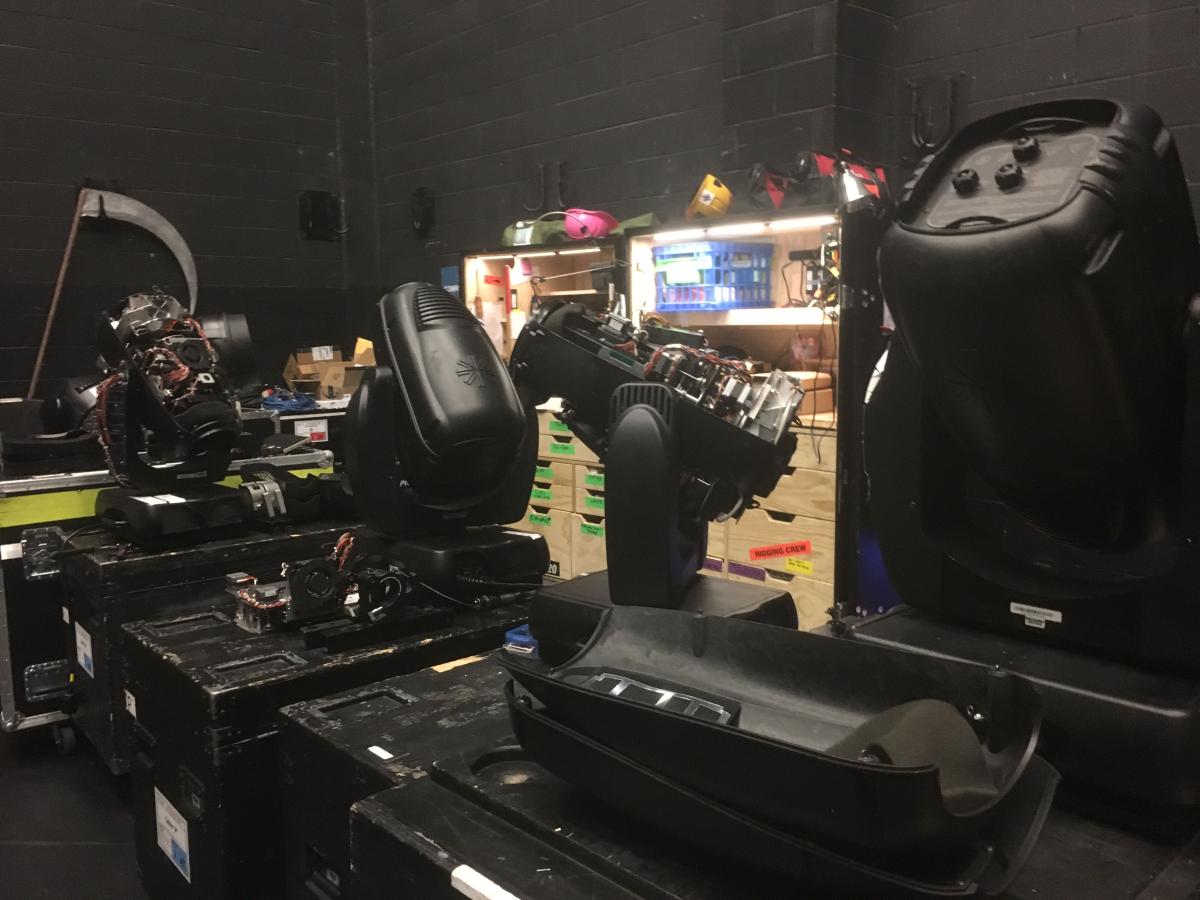
- Pink Hard Hat: The tours I’m on require a hardhat for load-ins & load-outs. The tour provides generic ones, but I bring my own. The pink color makes it really easy for my local crew to find me.
- Safety-Toe Black Work Shoes: If you’ve ever dropped a Socapex connector on your toes in lightweight shoes, you’ll know why safety toes are a good idea. Plus, I can kick road cases as needed. (Side note for ladies looking for work shoes that are not men’s construction boots: Look at brand-names Sketchers, Keens, and Moxies Trades.)
7. SOFTWARE: Besides Word, Excel, Dropbox & Email, I have a few other bits of software that I often use on the job:
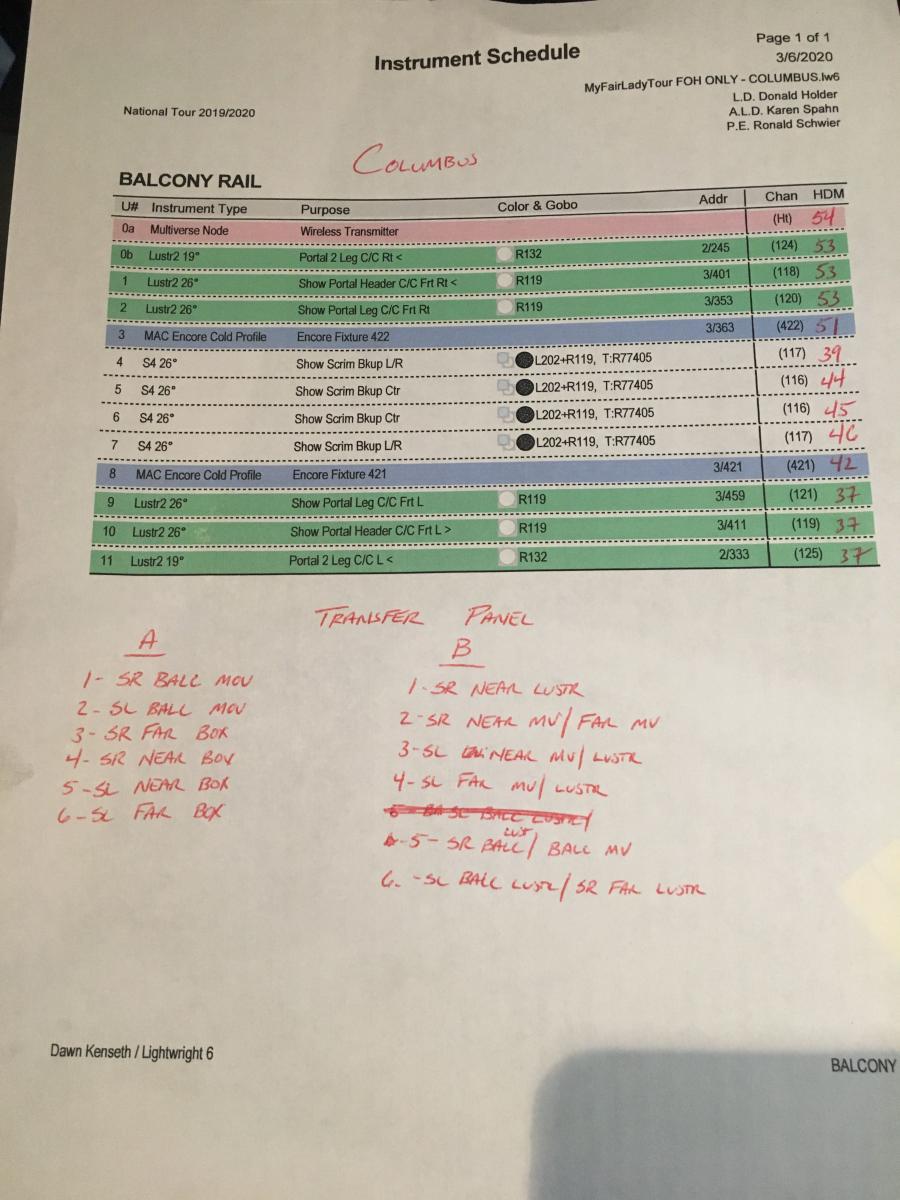
- Lightwright: Although there isn’t much updating to do to the main file after a show is open, I will make various FOH Instrument schedules for different box booms, balcony rail & cove setups at different theatres.
- Filemaker: I use this more often when I’m working as a production electrician. This database software allows me to create the detailed labels we put on everything: Roadcases, moving lights, cables, etc. Filemaker is also used by some ALDs for the followspot paperwork, and I’ve also used it for the ML maintenance logs on some shows.
- MLA (Moving Light Assistant): This program is how we document all the moving light focuses and cue looks for the show and can follow the EOS via OSC. During load-ins, I will focus the moving lights by referring to the images captured here of both the total preset and also each light within. Then during the performance, it will follow the light cues so that I can compare a documented cue-photo to the live stage picture.
- What about drafting programs? Actually, there isn’t much drafting to be done after the show is built. I make various “FOH hang sheets” to help the crew hang FOH, and I occasionally help out with truck pack drawings for my department’s gear, but that’s about it.
PART THREE: Long Term Touring & Hotel Living Packing/Hacks
Besides the basics of toiletries, phone chargers, and a wardrobe for multiple climates, here are a few things I’ve learned are useful for long-term touring:
1. A “Kitchen” Kit: Ordering delivery or eating at restaurants is expensive and can be time consuming, nevermind the calories. Therefore, I now have a bag of kitchen supplies and pantry items, so that I can make some meals myself in the hotel room or green room. My kit includes real silverware, a microwavable plastic bowl, plate & travel coffee mug. My pantry may include cereal, oatmeal, microwavable soups or pasta meals. Lastly, I have a container of single-serve condiment packets (salt, sugar, ketchup, etc…) rather than buying full-sized bottles. I grocery shop small but often since perishables are hard to move from city to city.
In addition to the basics, I sometimes have a hot plate, pot & pan for making simple ingredient meals like grilled cheeses, pasta, or omlettes. When I was coach-bussing from city to city a bunch, I traveled with a cooler to keep my refrigerated items longer. Some crew members travel fancy coffee gear or a crockpot, and I have even seen a bread maker on tour. As long as you’re actively using it and have the trunk space available to store it, just about anything is game.
2. A HOBBY! Working on tour can be an all-encompassing endeavor, so having a non-theatre related hobby allows you to step-away and decompress. It’s called work-life balance my friends!
The tricky part is choosing a hobby that takes up the right amount of space and is something you’ll actively use with your itinerary & work schedule. Some hobbies can be ‘gigantic’ in packing terms: I’ve had crew-mates with elaborate gaming consoles, guitars, and fold-up bicycles. Other friends have had knitting supplies, a full poker chip set, or the previously mentioned bread machine. I’ve traveled with my share of ridiculous hobby items too over the years- a Wii console, a Razor scooter, and a “pet” aloe plant to name a few.
3. Good Travel Credit Card (or three): Collecting hotel points and airline miles can be a fabulous perk of touring, and playing the credit card points game only adds to that benefit. I have always embraced credit cards as a tool – not for accumulating debt, but for the convenience of not carrying cash. Many of my cards have some version of travel points or rotating 5% cash-back deals, so I keep a post-it note in my wallet to remind me which one I should use at the grocery store, restaurants, etc.
4. Jewelry Organizer: As you can imagine, my wardrobe options are pretty limited, but I’ve adopted earrings & necklaces as a great way to add variety. Currently I am using clear plastic utility boxes (like those meant for fish bait), which are great because I can see all my options without unpacking everything.
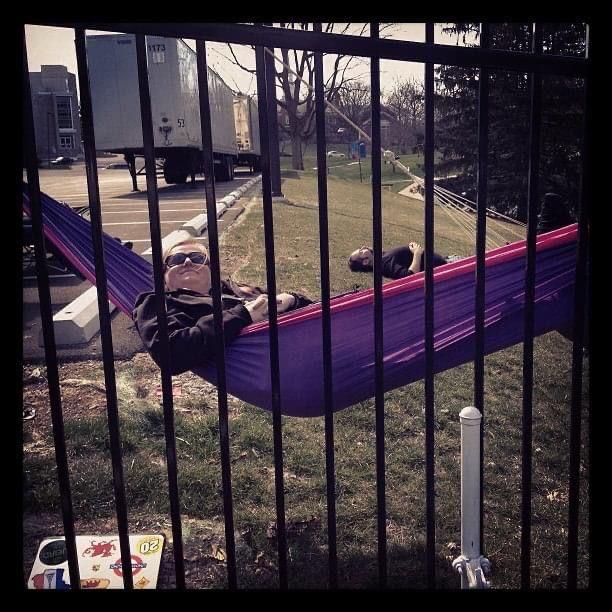
5. THE ULTIMATE TOURING “CREATURE COMFORT”: A TRAVEL HAMMOCK: I have to end with the best, and one of my long-term favorite items on the road. On load in days, sometimes we get done a little early and have extra time to relax. Then on two show days, we have that block of time between shows to fill.If the hotel is too far away or I’m not in the mood to venture out, I can hang up my hammock and relax. Once somewhere in Florida, there were no restaurants nearby, so I ordered some Chinese delivery and added the note: “Theatre Loading Dock- Pink hammock next to the semi-trailer.” Food delivery directly to a hammock is awesome. If this isn’t living the good life, I don’t know what is.
Off
More News
Support USITT
For many 501(c)3 nonprofit organizations, USITT included, donations are a lifeline. We are able to continue to expand our online offerings to our Members and to our industry thanks to Membership dollars and the generosity of our donors.

